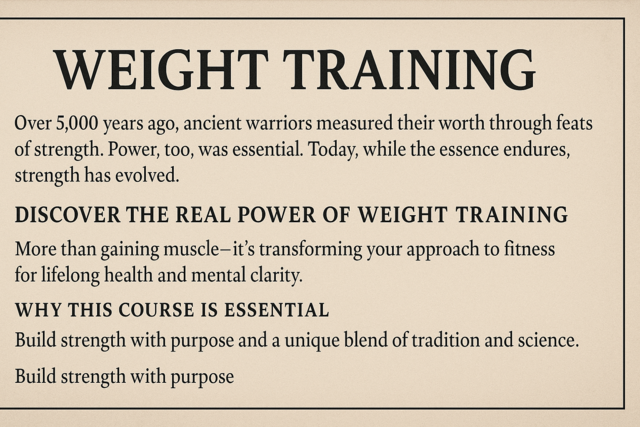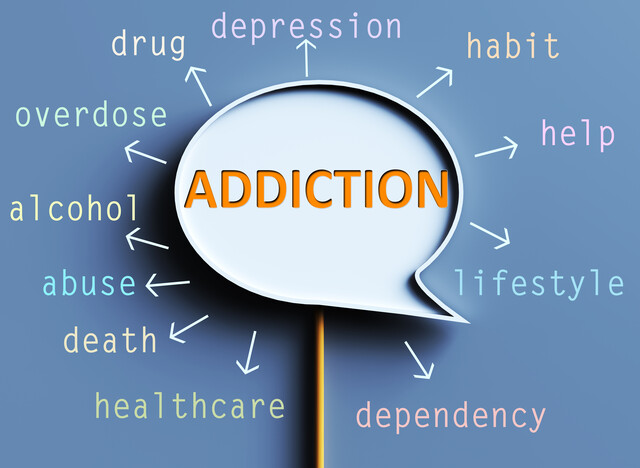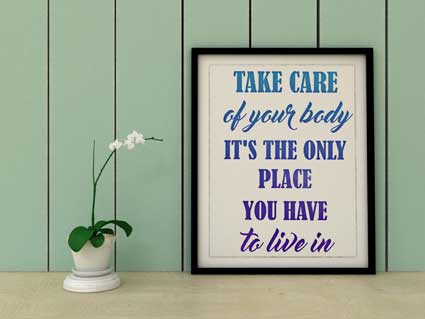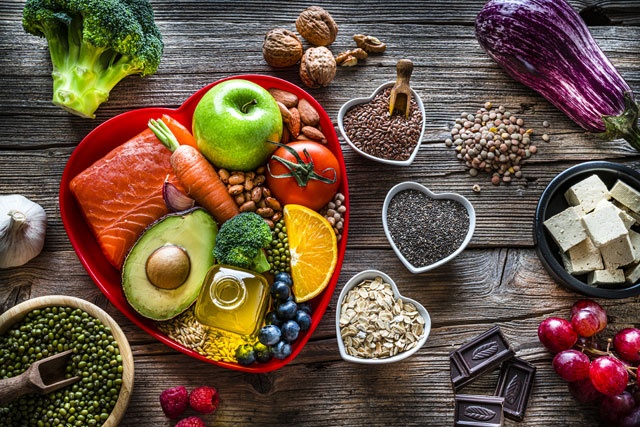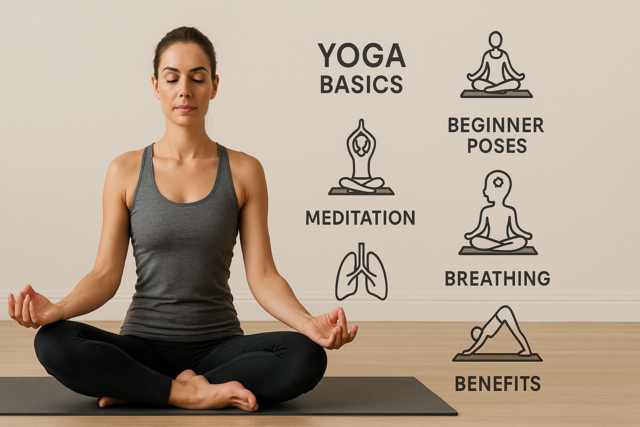In many ways, managing a healthy weight is a lot like managing your finances. If you want to save money, you need to make more than you spend. To do this, you have to cut back your expenses, or earn more money without spending more. Everyone knows how difficult it can be to hold back when you get a paycheck -- the first impulse is to go out and buy something fun. But then you think about the mortgage, the car payment, the electric bills, and how you'd like to put something away for retirement or a fun vacation.
Your body also has a budget. The body's income is the calories you put in with food you eat, and the expenses are all the caloric "costs" you spend during the day. Luckily, we consume a lot of calories just sitting around breathing, typing on computers, thinking, and keeping our hearts beating. This is called the Basal Metabolic Rate (BMR), and it's like your body's basic expenses to stay alive. A five-foot-five inch tall woman weighing in at around 155 lbs has a BMR of about 1460 calories a day. That means she has to take in 1460 calories per day just to do the normal functions of life.
BMR varies from person to person. The more you weigh, the higher it is. The more lean body mass you have (more muscle, less fat) the higher your BMR will be. As we age, lean muscle mass decreases, and the BMR decreases also. In other words, as your body ages, it spends less and less calories every year just to keep you alive. For most of us, this means that the French fries and cookies we used to be able to enjoy without consequences as teenagers, eventually end up packing on pounds.
With your personal finances, you know that if you cut back your expenses on the same income, you will be able to save a little money and start a savings account. Your body does the same thing as you age: It spends fewer calories keeping you alive, and starts a savings account in the form of fat deposits. This savings -- call them love handles, saddlebags, beer gut or whatever else, is all the body's way of saving for a rainy day. It's a very clever adaptation, considering that for most of the history of the world, people lived in a state of near-starvation. The body is just trying to prepare for the day when McDonald's isn't available.
However, that extra storage system causes some problems for us in our modern, food-filled world. The only way to reduce that savings account of fat is to spend more than we take in, and the only way to maintain weight -- whether after a substantial weight loss, or just to stay at a healthy weight as we age -- is to make sure that the ins and outs balance evenly.
That is the most essential and unavoidable fact of fat loss. It is possible to drop a few pounds over a very short period through dehydration -- for example, running a marathon will cause you to sweat out a few gallons of water -- but eventually, you will recoup that loss (we hope) through drinking and rehydrating your body. If you have ever known someone who wears a rubber suit while exercising, their goal is to make the body sweat more to promote water loss. Wrestlers used to do this in order to drop a few pounds in the very short term to make a weight goal. They only needed the loss for one day, and after they weighed in, they could go drink and replenish the water loss.
Studies have now shown that this is an unhealthy practice. It is not sustainable for your body, it doesn't accomplish any positive objectives for your heart or muscles, and water loss and dehydration have a lot of negative consequences. Beware of any diet plan or friend that recommends using rubber suits, diuretics (drugs that promote water loss), or laxatives as a way to lose weight. These methods can be extremely dangerous.
Instead of flushing fluids, it's important to keep an eye on what you're eating. The best way to do this is to get a reasonable idea of what you're putting in right now. Keep a log of everything you eat over one whole day. For most people, tracking every item eaten over a long period of time would be extremely tedious, but just few days should give you a realistic idea of what you eat. On this first day, try to be as "normal" as possible. Don't go out and splurge at fast food restaurants, but don't go the other direction and fast all day, either. The more complete and honest you are, the better picture you will have of your eating habits.
|
Example: June 12 Breakfast: Oatmeal with raisins, cranberries, and almonds. Two cups of coffee with milk and sugar. 10 a.m. snack: Two sugar-glazed donuts in the break room. Lunch: Buffet with friends. Two fried chicken breasts, mashed potatoes with gravy, green beans with bacon, small square of cheesecake and chocolate chip cookie with ice cream. Afternoon snack: Starbucks grande mocha with whipped cream and a blueberry scone. Dinner: Lasagna, Italian bread with garlic butter, Caesar salad. Dessert: Bowl of ice cream. |
Sitting down at the end of the day and looking this over, you may be surprised. Most of us tend to forget the little snacks here and there, like the break room donuts. Many people just have no idea of the calorie counts involved in certain foods, especially fancy coffee drinks and bakery goods. Keeping track of it all just for one day gives you an idea of where you are and some of the easier places to cut back. Just like with your personal finances, some cuts are easier to make, and those will be the first to go.
I know what I ate, but what did it "cost?" For many of the foods you eat in a day, you can only guess at the calorie content, especially if you eat in an independently owned restaurant. Even a dish that looks innocent, like a fillet of sole, could be prepared in butter sauce for all you know. But there are several tools for tracking down the nutritional information and at least getting a realistic picture of the day's calorie income.
1. The Internet. There are now a plethora of websites that list nutrition info. Calorieking.com is one, and Google has a calorie calculator you can add right into your home page. Many of these calculators have specific information about foods from the big restaurant chains, so you can look up exactly what you ate.
Many of these Internet applications can also be downloaded to an iPhone, but again, beware of becoming obsessed with tracking every morsel in.
2. Cookbooks with nutrition info. More and more cookbooks are starting to cater to the health conscious, and are including nutrition information.
3. Nutritional labels. We all see those grids on the backs of food packages, but how often do we really look at them? The U.S. Government compels companies to provide consumers with fat and calorie information on many packaged foods, but there are still some aspects of the label that make it misleading. For example, portion sizes. Have you ever picked up a snack-sized bag of potato chips and noticed, after eating the whole bag, that the "serving size" was actually about four chips? If you actually ate 30 chips, that means you have to multiply the per-serving calorie count by more than six. And who actually counts how many chips they ate? Before opening the bag, take a look at Serving Size, Servings Per Container, and then calories.
For example, this nutrition label is a copy of the one on a 4-ounce box of Ritz Crackers. That's a small box, one single sleeve of crackers. If you look at the serving size, Ritz has provided us with a completely non-useful but factually accurate size of 16 grams of crackers. Unfortunately, most of us do not carry a scale around in our purses in order to measure crackers. You can also figure by looking at "Servings per Container" that a single serving is one-seventh of a sleeve of crackers. For many people, crackers are a simple thing to pull out of the cabinet while you are preparing dinner. They go easily hand-to-mouth, no preparation involved. And it is so simple, while saut�-ing your onions, to eat a half a sleeve of crackers and not even notice you've done it. Looking only at the calories line might lead you to believe that you have only consumed 80 calories by doing this, but in reality, if you ate half the package, you consumed 280 calories. When using nutrition labels, the information is all right there, but sometimes you might need to do a little more analysis, or even use a calculator, to get the right answer.
Once you have figured out where to find your calorie info (on the Internet, in cookbooks, or from nutrition labels), then you can add up the calories from your one-day log and figure out what you consumed.
For the example log of June 12, listed above, our sample person consumed the following:
|
June 12 |
|
|
Breakfast: 2 packets maple & brown sugar oatmeal |
314 |
|
With 1 tsp raisins |
31 |
|
1 tsp cranberries |
23 |
|
1 tsp almonds |
33 |
|
2 cups of coffee |
4 |
|
With skim milk |
25 |
|
� tbsp sugar |
29 |
|
10 a.m. snack: 2 sugar-glazed donuts in the break room |
383 |
|
Lunch: Buffet with friends. |
|
|
2 Fried chicken breasts |
720 |
|
mashed potatoes |
226 |
|
with gravy |
30 |
|
green beans w/bacon |
200 |
|
small square of cheesecake |
230 |
|
chocolate chip cookie with |
130 |
|
ice cream |
130 |
|
Afternoon snack: Starbuck's grande mocha with whipped cream |
610 |
|
and a blueberry scone. |
460 |
|
Dinner: Lasagna |
850 |
|
Italian bread with garlic butter |
372 |
|
Caesar salad |
346 |
|
Dessert: Bowl (1 cup) of vanilla fudge swirl ice cream |
260 |
|
Grand total |
5406 |
Our sample person discovers that she has consumed 5406 calories in just one day. If our person is a 5-foot-6-inch female, 37 years old, and weighing about 155 pounds, we discovered earlier that she only needs about 1460 calories a day to keep living. So on this one day, she has consumed about 3 to 4 times the amount of calories she needs. Let's hope this was an unusual day for our imaginary subject, or that she is a high-intensity athlete, because at the moment, she has a huge calorie surplus going on, which her body will convert into substantial fat deposits for the future.
Real calorie expenses
Earlier, we talked about BMR, or the rough amount of calories you burn just breathing, and keeping your heart and brain going. Only very sedentary individuals function at this low level. If you work at a desk all day, and also have to spend several hours in your car commuting, you could be close to this level - but any extra activity, like mowing the grass, taking the dog for a walk, walking from the car to the building, or trekking from meeting to meeting, will add to your real calorie expenses for the day.
To figure out what your current calorie expenses are, take stock of what physical activities you do in a single "average" day. As with all the rest of these baseline exercises, try to be realistic. Remember, the more accurate you are in the beginning, the easier it will be to track your improvement in the future.
At the end of a day, write down all the physical activities you did. Don't just think about "workouts" at the gym or distance running. Think about the little things, too, like vacuuming the floor, walking the dog, strolling in the grocery store, or cardio-shoe-shopping (this is endurance shopping, usually done at the end of season, when the shoes are on sale).
Once you have put together all your activities, you can turn to the handy Internet to find calorie-burn calculators and add them up. Ace Fitness has a variety of interesting calculators, including a physical activity calorie-burn calculator. Your local library or bookstore may also have books with printed tables.
Or, you can look up your estimated daily caloric needs on the Ace Fitness Website. This calculator will ask your height, weight, age and activity level, and will compute your estimated caloric needs. It's kind of a fun tool to use.
Balancing the budget
Our sample example person in this section ate about 5400 calories on her one example day. Even if she engages in hard exercise 6-7 days a week, the estimated caloric needs calculator indicates that a woman her size, weight, and age (37) would need only 2400 calories a day to maintain her weight.
If this sample person regularly consumes 5400 calories a day, it would be extremely difficult for her to immediately cut back to 2400. Instead, it would be a better idea for her to go back and look at her one-day food journal to find the easiest places to cut back. She might start off with skipping the afternoon scone at Starbucks, and cutting out the whipped cream and whole milk in her mocha drink. Once she adjusted to that change, she might also look at dropping back to one break room donut, and then cutting them out entirely.
For many people, it's actually easier to start off by increasing calorie expenses than decreasing food intake. Sometimes taking care of yourself starts with movement, and then progresses to food. Whatever activity you do, get a reasonable idea of how many calories it burns. You might be surprised by how much you can sweat, while only burning off the equivalent of an apple.
The bottom line is, keep it all in balance and move gradually. Make the easiest changes first, like adding in a lunchtime stroll, or switching to fat-free salad dressings and reduced-fat cheeses. Take things one step at a time, and be prepared for setbacks.
If you know you turn to food when you're upset, you will have to come to terms with this trait and formulate a plan to conquer it if you want to get to a point where you control your diet, not the other way around. The first step is to understand what makes you head to the snack bar. Some examples might include: having an argument with your boss at work (or with your spouse), trying to deal with a toddler who has thrown several temper tantrums in one day, or getting bad news about a loved one.
Whenever you realize you have engaged in some emotional eating, don't beat yourself up over it, and don't feel like you have to overcompensate by running 20 miles, or starving yourself for two days. Just let it go and try to think of productive ways you could deal with the same emotional situation in the future. Some positive, constructive alternatives to emotional eating might include:
|
o Going for a quick walk around the block/corridor o Talking to a friend about whatever is bothering you o Taking several long, slow, deep breaths, focusing as much on the out breath as the in o Saying a prayer o Listening to music you love o Pouring yourself a glass of ice water with a squeeze of lemon o Doing a few calming yoga stretches o Meditating |
You can also come up with your own alternatives. It is helpful to write these ideas down in a convenient place where you are most likely to get stressed. If your work situation is stressful, then it would make sense to keep the list on your desk. If your toddler or teenager at home is causing stress, then keep your list there.
It is also very helpful to remove all of your favorite binge foods from the house, and don't buy them again. It will be hard in the beginning to toss out the chocolate kisses and the ice cream sandwiches, and it might be difficult to convince the others in your house that this is a good plan. But if you go to the cabinet in times of crisis, looking for a candy bar , and you can find nothing but rice cakes and whole-grain pretzels, you might just burn off your stress will rummaging through cabinet after cabinet of harmless foods.






